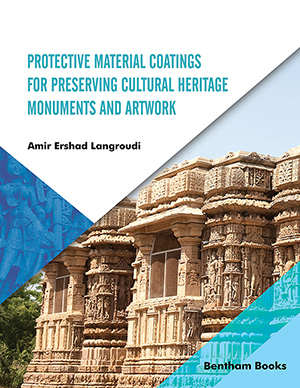Abstract
Conservation methods and intervention materials should be compatible with
preserving historical and artistic monuments. Therefore, it is necessary to characterize
the chemical compositions, microstructures, thermal and mechanical properties, the
corrosion and weathering conditions of historical and cultural monuments, and the
proposed coating to protect them. The environmental impacts and mechanisms of
change due to their natural aging or artificial aging processes should be investigated.
Various chemical methods have been developed because of the incredible variety of
materials used to prepare historical and cultural monuments and artifacts. A variety of
ways for analyzing elements, including atomic absorption spectroscopy, X-ray
fluorescence, proton emission X-rays (PIXE), and μ-PIXE, and X-ray energy
spectroscopy in scanning electron microscopy, are presented with a few practical
examples. Infrared and Raman spectroscopy are the conventional methods used to
characterize mineral and organic compounds. X-ray diffraction (XRD) is also a fast and
inexpensive technique for distinguishing amorphous and crystalline materials and
characterizing natural and synthetic crystals. Among the imaging techniques, the
optical microscope is used for obtaining necessary information about various
specimens in relatively small magnifications up to about 2,000 times. Scanning and
transmitting electron microscopes (SEM-TEM) provide images at high resolution. The
Atomic Force Microscopy (AFM) represents the three-dimensional topography of the
surface. Thermal analysis is a quick and accurate method for measuring the percent of
mass changes in material with temperatures such as water evaporation, solvents and
volatile materials, and organic compounds decomposition. Mechanical-thermal analysis
can provide practical information such as glass transition temperature and elastic
modulus. A variety of methods for determining weathering resistance, corrosion
resistance, and surface hydrophobicity are introduced. This review describes some of
the typical applications of laboratory techniques and provides scientific information for
right choice of materials and valuable coatings for their protection.
Keywords: Chemical and Mechanical Properties, Conservation, Corrosion, Heritage and Artifacts, Materials, Physical, Weathering.

















